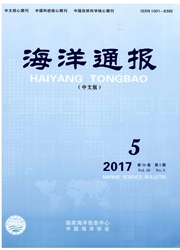

 中文摘要:
中文摘要:
海洋荧光溶解有机物(FDOM)是海洋有色溶解有机物中可产生荧光的组分,其理化性质对于海洋上层的水色遥感、光化学以及浮游植物的生产力和生态系统结构与功能等都有重要影响。总结了FDOM的3种荧光光谱分析技术及其特点,重点对其两种主要成分(类腐殖质和类蛋白质荧光物质)的荧光特性、分布变化以及来源、分布变化及其去除等进行了全面细致的综述,阐述了研究FDOM的海洋学意义,并对今后有待深入研究的重点问题作了展望。
 英文摘要:
英文摘要:
The fluorescent dissolved organic matter (FDOM) is the fluorescent component of marine chromophoric dissolved organic matter (CDOM). It has significant influence on the remote sensing, photochemistry, phytoplankton productivity and the ecosystem structure of the surface ocean. Three kinds of spectrofluorimetries for seawater FDOM were summarized and compared, with specific emphasis on three-dimensional excitation/emission matrix spectra (EEMs). The fluorescent characteristics, distribution, variation, source and transformation of the two main components of FDOM--humic-like and protein-like substances, were systematically discussed. Then, scientific questions were raised for further research, such as photochemical reaction of CDOM and its ecological effects, role of bacteria in production and transformation of CDOM, relationship between CDOM and colloidal organic carbon, and interpretation of EEMs signals.
 同期刊论文项目
同期刊论文项目
 同项目期刊论文
同项目期刊论文
 期刊信息
期刊信息
